The Park 900, 900 Park Avenue: Review and Ratings
between East 79th Street & East 80th Street View Full Building Profile
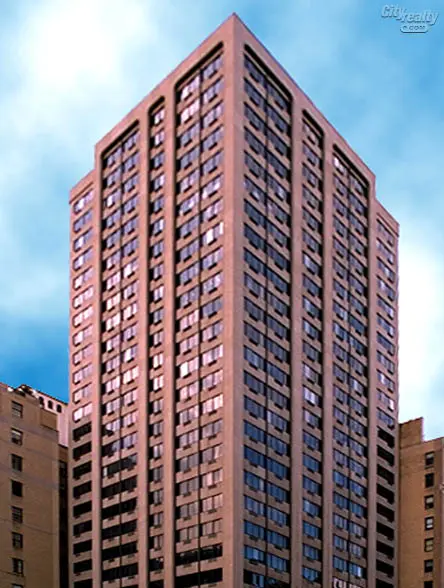

This apartment tower at 900 Park Avenue on the northwest corner at 79th Street was one of two that significantly pierced the traditional cornice line of Park Avenue in the 1970s. The other was 733 Park Avenue on the southeast corner at 71st Street.
This 28-story building was completed in 1973 and designed by Philip Birnbaum. Jay Spectre Inc. designed the building’s large and high lobby and a tenants’ restaurant in a Modernist style.
It was developed by Jack Resnick & Sons and has 124 apartments.
Bottom Line
This tall tower has the nicest landscaped driveway on Park Avenue and a fine Botero sculpture to divert attention from its height, which provides some great vistas but disrupts the boulevard’s cornice line.
Description
900 Park Avenue is set in its own, large, landscaped plaza and has a driveway.
Architecturally, this building's limestone façade has a vertical emphasis and its lobby is quite spacious and highly visible because of large windows
While 900 Park Avenue is more visible because 79th Street is a major cross street and its plaza is deeper than 733's, it is also a more attractive building.
In their fine book, "New York 1960, Architecture and Urbanism Between the Second World War and the Bicentenntial," Robert A. M. Stern, Thomas Mellins and David Fishman noted that "the negative impact of the building...was exacerbated by the fact that the plaza was recessed below the sloping grade of Park Avenue in a moat-like arrangement, which removed the hulking tower even more from the avenue's largely intact building wall."
The tower could have been better, but is handsome even if its setback from the avenue is unfortunate.
It has four windows bays on its south and east façades and the three nearest the corner on each side have rounded tops and bottoms.
Developers cannot be expected to not take maximum advantage of existing zoning and this building reflects what the city's zoning then permitted. Plazas are not needed on Park Avenue for light and air, but they permitted developers to build taller buildings that obviously provide much more spectacular vistas for many apartments and those apartments command much higher values.
Amenities
The building has a 24-hour doorman, a concierge, a garage, a gym, and a live-in superintendent.
Apartments
Apartment 22A is a three-bedroom unit with an entry foyer that leads to a 30-foot-long living room with a 12-foot-long dining alcove next to the kitchen.
Apartment 14A is a two-bedroom unit with a 30-foot-long living room with a 12-foot-long dining alcove next to a 9-foot-long kitchen.
Apartment 18C is a one-bedroom unit with an entry foyer that leads to a 22-foo-tlong living room with an 11-foot-long dining alcove next to a pass-through kitchen.
Apartment 16B is a one-bedroom unit with a 10-foot-wide entry foyer that leads to a 20-foot-long living room.
History
Both this building and the one at 733 Park Avenue were attacked by some architectural critics and planners for their insensitivity to the surrounding architectural and urbanistic ambiance, their lack of contextual concern.
The passage of time and the proliferation of many other high-rise towers on the Upper East Side have somewhat softened the towers' original jarring effect.
Indeed, both now appear more sedate than egregious even though the original criticisms were valid in charging that the celebrated design integrity of the relatively consistent building heights on the avenue should not be violated.
This tower is quite different from 733, which is dark and rather somber.
Its plaza is larger than 733's. Furthermore, the building eventually installed attractive public art in its plaza. Originally, the art was a Henry Moore sculpture, which prompted a rather snide 1974 editorial in The New York Times about "throwing good art after a bad building....Architecture is still the missing element. It's a cultural con game."
Subsequently, the Moore sculpture was replaced by a “Four Generations,” a sculptre by Francisco Zuniga that used to adorn the courtyard of St. Bartholomew’s Episcopal Church at Park Avenue and 51st Street, and eventually a large and charming bronze sculpture of a cat by Botero. The owner of the Zuniga, Edward Sindin, the owner of the Sindin Gallery, removed it from St. Bartholomew’s to protest its plans, eventually abandoned, to sell some of its land for a skyscraper.
In his 1990 book, "Park Avenue, Street of Dreams," (Atheneum), James Trager noted that Paul Goldberger's view of 900 Park Avenue when he was the architecture critic of The New York Times was that it was "a more serious violation" of the avenue's "spirit" than 733 because "it creates a sense of void at a crucial intersection."
In addition, Goldberger, Trager continued, identified architect Birnbaum as the designer of "most of the boring Second Avenue high-rise towers" and maintained that at 900 Park Avenue he went "arty, and the results are dismal indeed."
As the most prolific designer of high-rise apartment towers in the city of his era, Birnbaum produced an astonishing array of plans and variations ranging from the banal to the quite interesting. His design here actually marked a definite upgrading of the stereotype, post-war residential tower, obviously reflecting its prime, elegant location.
The building replaced one of the last large corner townhouses on the Upper Eastside, which had been designed by John Mead Howells and Issac Newton Phelps Stokes in a collegiate style for John Sherman Hoyt in 1917. In a February 16, 2012 article in The New York Times, architectural historian Christopher Gray noted that Mr. Hoyt was an engineer, civic leader and a founder of the Boy Scouts of America. The house, he continued, was purchased in 1926 by James A. Stillman and subsequently had other owners. In another article, Mr. Gray noted that the Hoyt house was “one of the last big houses to go up on Park Avenue” and was for a while used by the Helen Norfleet Individual Study Programs Inc., a boarding school.
Mr. Gray described the Resnick tower at 900 Park Avenue as “easily the sorest thumb on the avenue with its dead-modern façade, adding that the 1917 mansion it replaced and “enlarged 40 times it would be worthy of Dowton Abbey.
The Resnick organization sold the building to American Invsco in 1979, which was founded by Nicholas S. Gouletas, Victor, his brother, and Evangeline, his sister, in Chicago in 1970. A March 18, 1980 article by Jeff Gerth in The New York Times said that a the company had “become enmeshed in several lawsuits alleging harassment, coercion and misleading and inadequate disclosure under New York’s conversion laws as a result of its attempts to convert” 900 Park Avenue and 400 East 56th Street to condominiums. The article said that Nicholas Gouletas had told a reporter in 1979 that “they say we’re aggressive” adding that “well, I consider it a compliment. I consider it being alive and doing my job.”
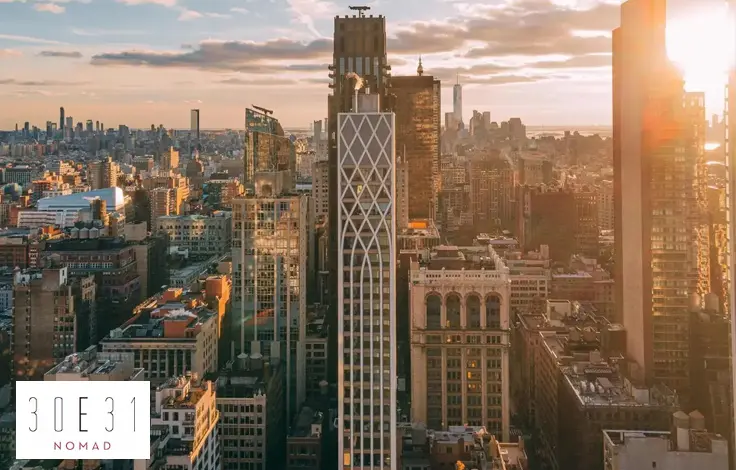
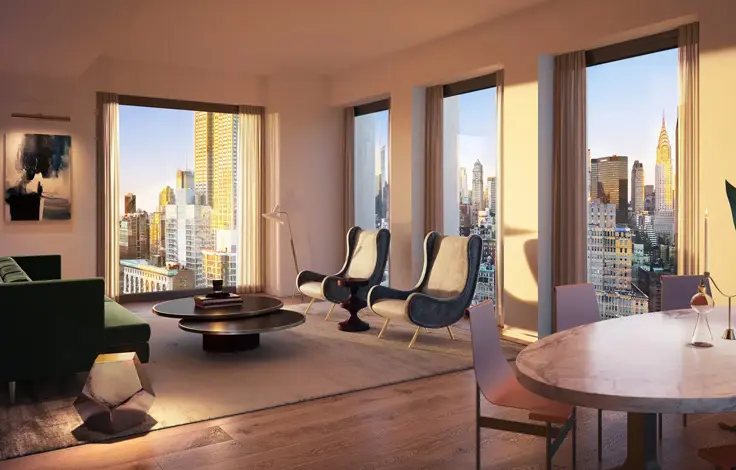

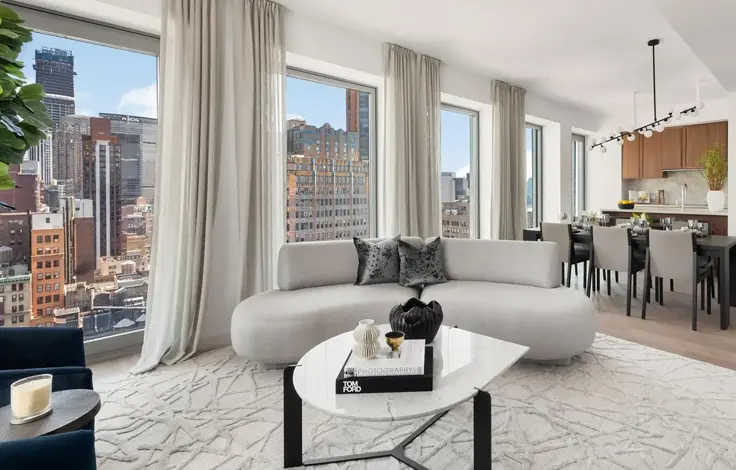
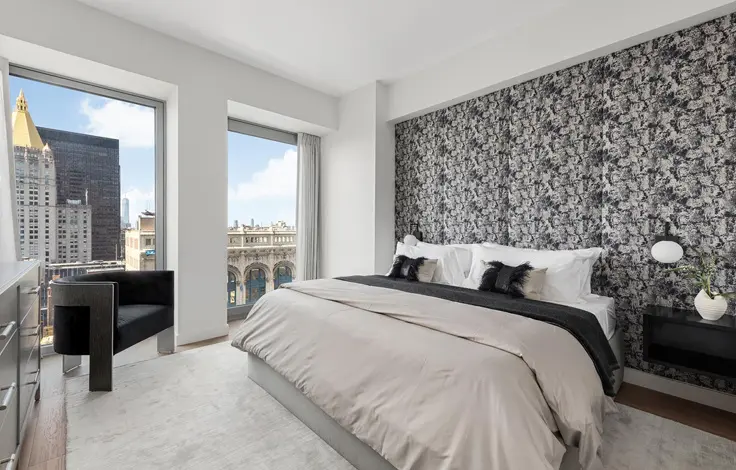
 6sqft delivers the latest on real estate, architecture, and design, straight from New York City.
6sqft delivers the latest on real estate, architecture, and design, straight from New York City.
